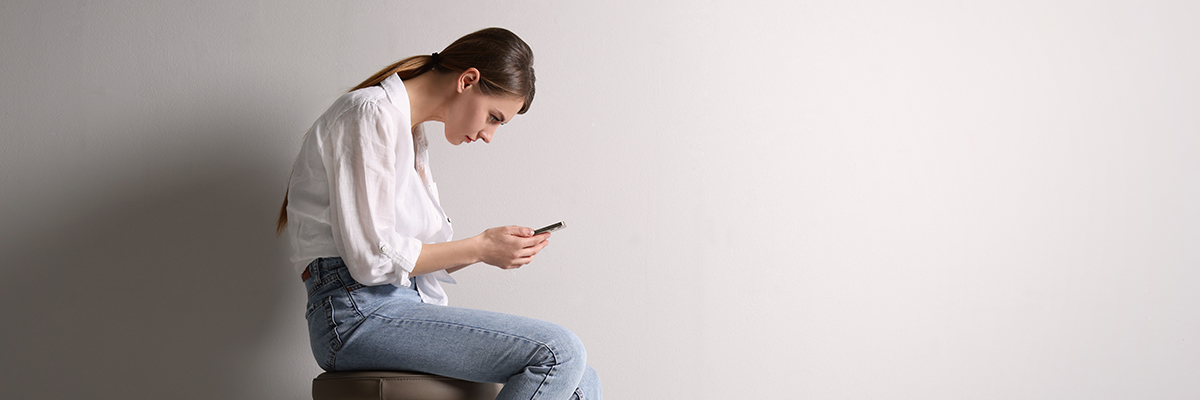Close social relationships and connections with our wider community are extremely important for not just out mental health but also our physical health.
Thanks to the pandemic all of us will be familiar with the impact physical confinement has on our, relationships, jobs, health and wellbeing. While lockdowns forced the global population into physical isolation many of us turned to social media to try maintain contact with loved ones.
But does social media replace physical interactions?
Recently, as part of post graduate research, I conducted a qualitative study looking at males’ perceptions of social media and its impact of social isolation. Perhaps unsurprisingly we found that even though it’s a useful tool it does not replace face to face interactions for the vast majority of men. Interestingly this doesn’t extend to business transactions, where contact via social media is preferable for most. While for men, business networking felt as successful online, the genuine, emotional communication required for personal relationships could not be recreated on social media.
But what does this have to do with injury and pain?
Pain research demonstrates a complex but significant relationship between pain, mental health, epigenetics, culture and social interactions. Due to lockdowns and forced isolation the world saw a significant rise in mental health concerns particularly among men and a significant increase in those seeking treatment for physical pain conditions such as low back or neck pain. This is due to the underlying neurophysiological and neuropsychological processes in which our brains process and interpret pain. Although the exact mechanism is still up for debate, we know the regular social interactions and engagement with our wider communities have a protective and relieving effect on pain. Essentially time with friends and loved one’s results in faster recovery from injury and illness and can also prevent and relieve pain and disease.
Although it is unlikely that we will experience further lockdowns (fingers crossed), injuries (and illness) can result in a similar period of isolation for many. A large part of our jobs as clinicians is to help keep clients engaged in “regular” life during the rehab process. This is 2-fold: one reason is the continue to stimulate tissue growth and maintain normal loads, the other is to minimise negative social and mental impacts of disengagement.
A big concern for many coming to physio is that we will stop you from training or exercising! But, long gone are the days when we recommend rest for injuries. At no point in your rehab should you ever have to stop moving (unless medically unwell) or mentally you need a break.
Basically, if it is important to you is important to your rehab!
Practically this means rehab programs aim to keep you involved in your normal life as much as possible. You and your therapist should set time sensitive goals that progressively move you towards full recovery. This means training around, not through injury and working with your therapist to identify training and lifestyle factors that are important to you.
In sports this can look like reducing volume, intensity or frequency of training, focusing on technical aspects of sport, or modifying strength and conditioning programs to reduce load through the injured structure. Following surgery, it will include early mobilisation ( often within the first 24hours) and early rehab beginning within the first 3-7days. In your work and home life it may include modifying the environment such as using a sit to stand desk or timing self-administered pain therapies such as specific exercises, relaxation techniques or pain medication. It may also mean working from home in order to allow for more flexibility with your physical demands and more energy to maintain social connection (even though it shouldn’t be it can be a little hard to do exercises in the office or in formal clothing!).
Outside of these it may also include thinking about things like how to play with your children, how to continue rehab when on holiday, how to sit through a movie or dinner with friends. Your clinician will work with you to tailor your program to suit your lifestyle and training needs, making sure your injury has as little impact as possible on your ability to stay connected with those around you.
While injury can be frustrating and scary, remember that it is temporary. The human body is capable of incredible things and so long as you are alive it is constantly adapting to stimulus, growing new tissue and learning new things. Getting an appropriate diagnosis is the first step as this will determine the time frame for your recovery. The next step is developing a treatment plan that fits your goals, social, mental and physical needs. Getting this right will help you recover faster and reduce the chance of recurrent pain or injury.
Thankfully you have the wonderful team at Anatomy Rehab who can help with these!


